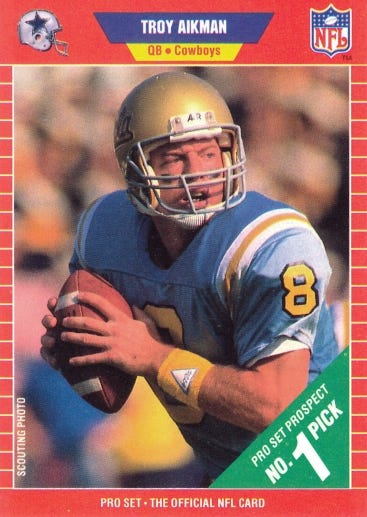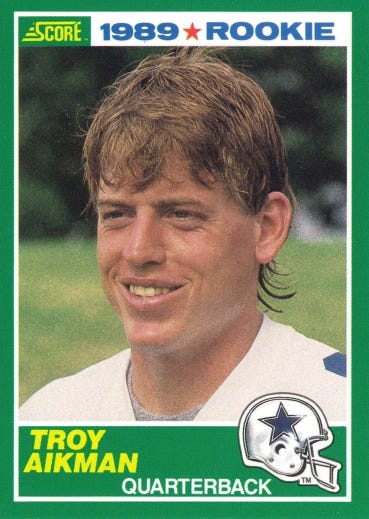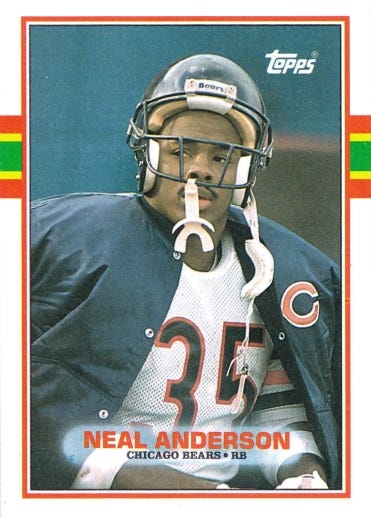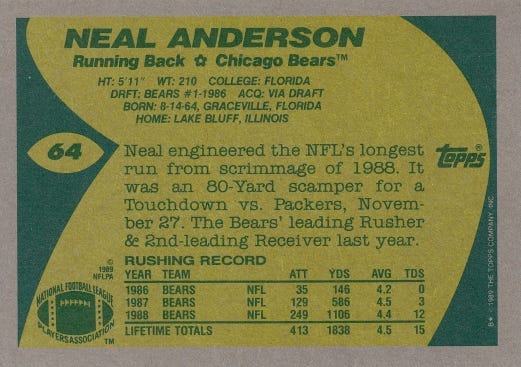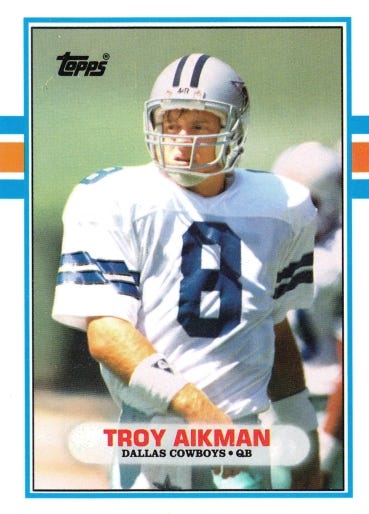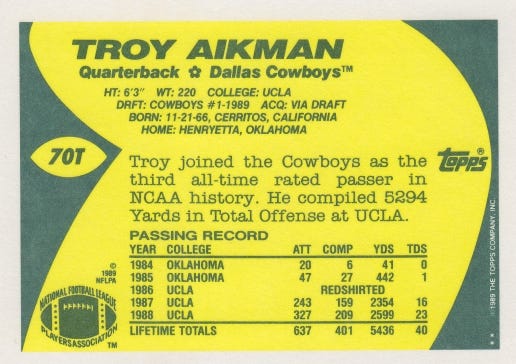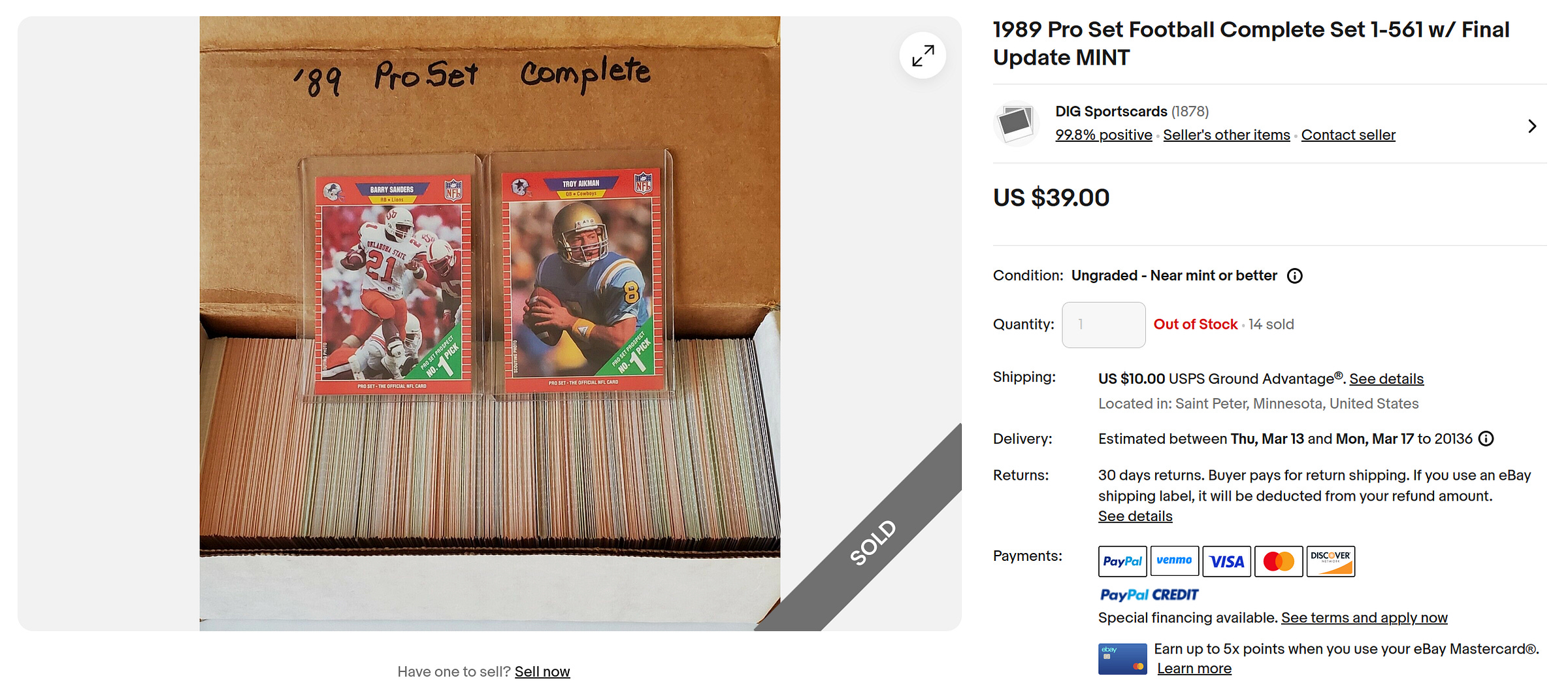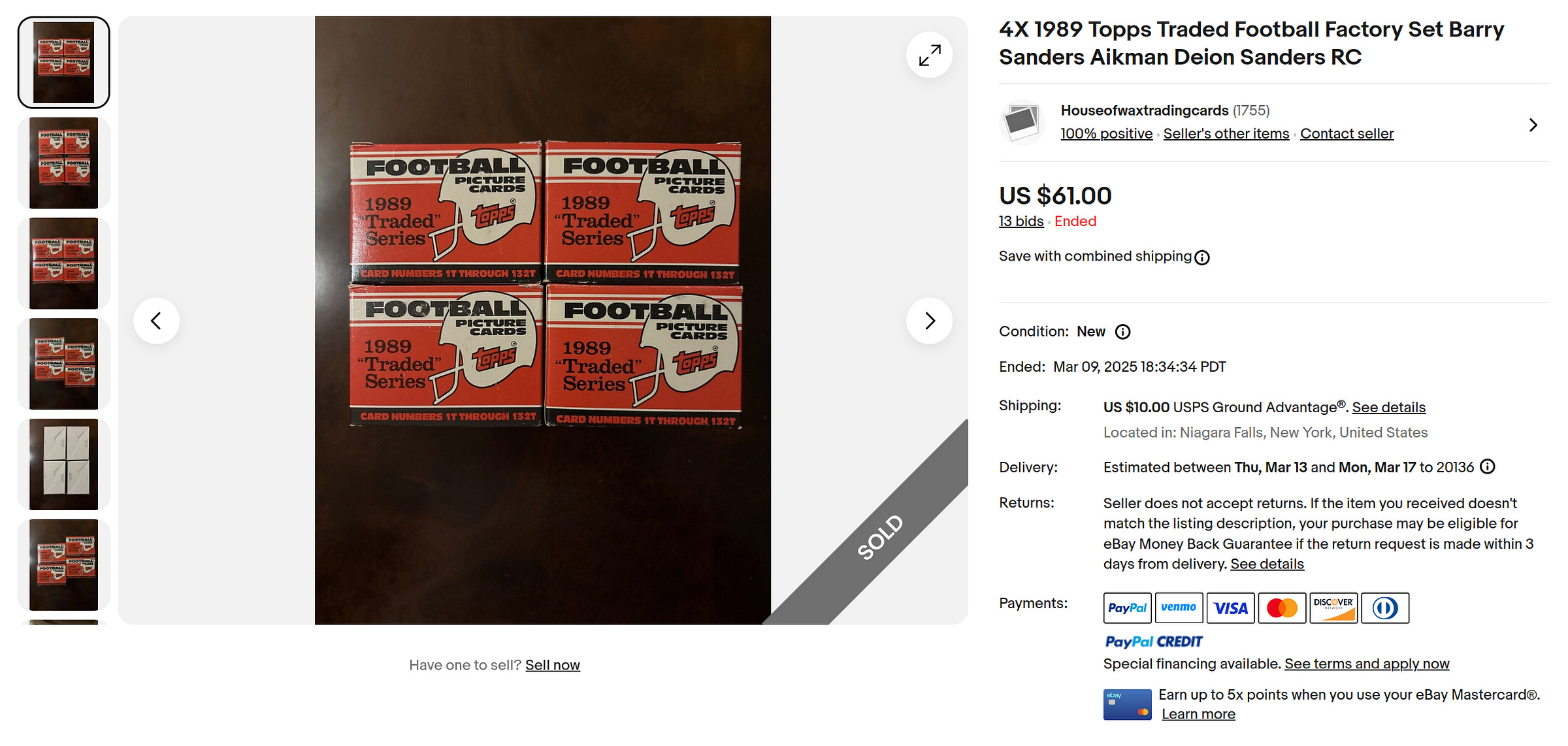The Year Football Cards Entered Modernity
As odd as it is to think of these days, the truth is that football cards weren’t exactly a hot commodity for years and years.
After a brief period of competition between Bowman and Topps in the early 1950s, which mirrored the competition between the companies in the baseball card world, Topps began a monopoly. Fleer entered the market briefly, making AFL cards in 1960, making cards for both leagues (as did Topps) in 1961, and then reverting to AFL cards until 1964.
Philadelphia Gum took over the NFL contract from 1964 to 1967, during which Topps made AFL cards. It must have been hard in those days to keep track of which company was making cards for which league, though the eventual failure of the Philadelphia Gum Company’s football cards allowed Topps to maintain its stranglehold over the market.
And that tight grip lasted until 1989.
1989 was when Score, which had only just started making baseball cards the year before, decided to enter the football market. And then there was a Dallas based company called Pro Set that made its initial venture that summer:
All of this, of course, was a sign of the times. Baseball cards were booming in the summer of 1989, and it was only natural to at least hope that some of that excitement would bleed over into some of the other sports.
So, in hindsight, how do the sets compare?
We’ll start off with 1989 Pro Set — a card set that was extremely common. I had a few hundred of these cards as a kid, and I don’t even remember opening packs. It felt like these cards spawned out of nowhere, sort of like 1990 Topps Baseball.
Pro Set’s set looked okay, though the white stripes on the sides have always struck me as distracting. The back is where Pro Set’s first attempt really stood out:
This wasn’t quite as attractive as what Upper Deck sets would look like two years later. However, this was at least a step in the right direction — especially with the full color photo on the back.
Next comes Score:
The Score set isn’t bad — in fact, I think this looks a lot nicer than Score’s 1988 baseball set. And the backs compare nicely with Pro Set:
Again — color backs will always win out over monotone and unreadable backs.
And, of course, that brings us to Topps:
I don’t know what you think about this set. The design just doesn’t do it for me. The color scheme looks like something from the early 1980s, not from 1989. Topps also seemed more than content to opt for boring photographs of players sitting around, which was a huge contrast to Pro Set.
And the backs were just bad.
Note that Topps did not have a Troy Aikman card in 1989 for whatever reason. Just like Topps usually did in its baseball offerings, it purposely held the big rookies for the end of season “Traded” set:
At least this time Topps managed to make the backs readable:
So what did the industry think?
It’s hard to tell, but we can see at least something in old articles like this:
Have the sets stood the test of time?
It depends, of course, on the quality of the set, how it’s been stored, and so on. The Pro Set complete set seems to fetch about $40 at auction, based on this recently sold listing:
The Score set seems to be a bit more desirable:
I don’t know about you guys, but, to me, $200 for a junk wax era set of anything seems risky.
And, finally, there’s the Topps set:
Told you it was an ugly design.
In fact, if you really want, you can probably pick up a whole stack of complete 1989 Topps Traded Football sets:
That gives you an idea of where demand is.





